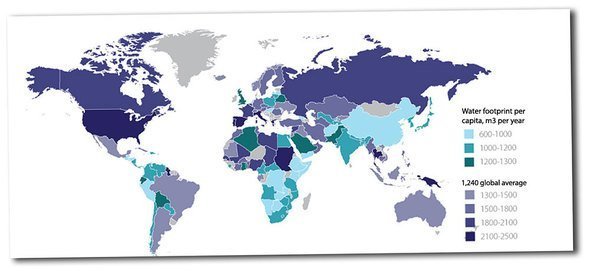Whilst it is not yet a maximum priority of the population, there is no doubt that environmental sensitivity has increased significantly in recent decades. The ecologist movement of the 60s was a minority, almost quaint, until the first political green movements in the 70s. At the end of the 80s, the term “sustainable development” was coined, and since the conference in Rio in 1992, the term forms part of our everyday vocabulary and fills media headlines. However, people are usually ahead of government, consumer habits are ahead of legislation and standards and new generations are more concerned with these issues than older ones.
Even in the United States, the largest water resources consumer per capita in the world, surveys indicate that 9 out of 10 people are worried about the environment. In regards to leisure, 70% of surveyed amusement park visitors would prefer parks to be more sustainable, especially youngsters, (75% in the case of the under-35s, and 52% in those of 55 and over). 34% of the total number surveyed would even be prepared to spend a little more to visit a sustainable attraction. Generally, the young public is educated and show scepticism of “green” proposals that do not irrefutably demonstrate that they are so.
The consumption of resources concerns all operators. It represents a significant percentage of operational costs and is increasingly so with the increase in energy prices. Overall, it can be said that parks try not to squander. However, the majority of waterparks do not have clear water-saving policies, the most important natural resource on the planet and which is in serious danger of becoming scarce. Water is also the base of their business. A waterpark consumes less water than a golf-course, but it could consume even less.
Luckily, some of the new waterparks are already designed taking into account sustainable criteria, integrating environmentally respectful technologies from the beginning. Filters that need less washing, local chlorine generation systems, chlorine-free treatments, rainwater recovery, reduction of night-time evaporation, LED lighting instead of incandescent, renewable generation, distributed pumping instead of centralised. All these technologies exist and waterpark designers are constantly developing new methods to reduce environmental impact, not only of the attractions but the whole of the parks’ facilities.
There is already official recognition of environmental policies, in the form of the international ISO 14001 certification, or Estidama’s Pearl Rating System. An increasing number of parks are ascribed to them, such as Yas Island in Abu Dhabi or Center Parcs throughout the whole of Europe. The United States, where more than half of the world’s waterparks are found, has yet to seriously implement sustainable criteria and show the positive results that they generate. The adoption of this type of policies not only reduces environmental impact. It also means savings in operating costs and improvement of the facility’s image. That is a sustainable waterpark.
RELATED STORIES
Newsletter



